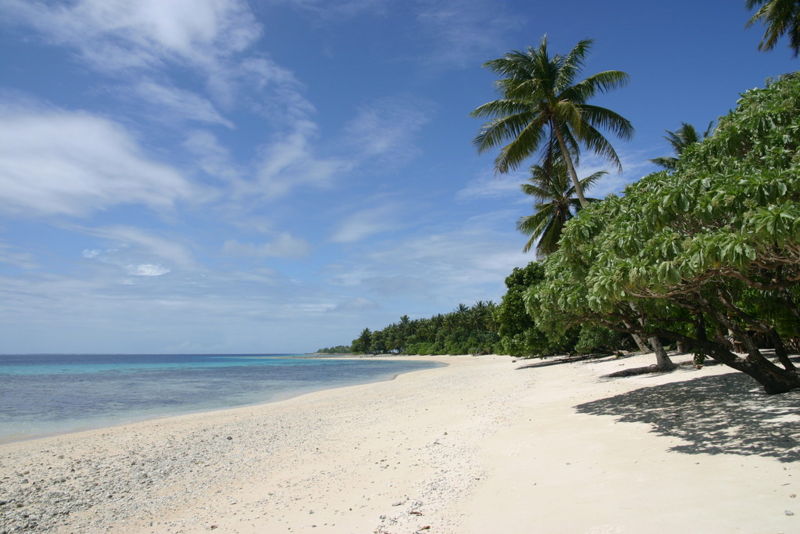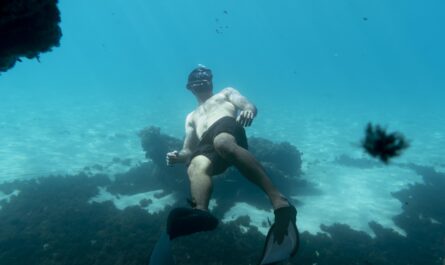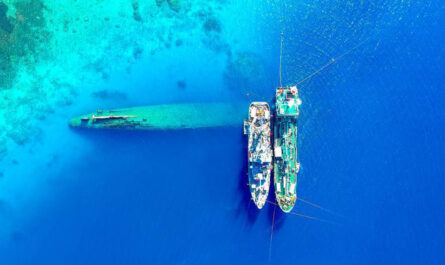Kwajalein Atoll, part of the Republic of the Marshall Islands, is known as one of the largest coral atolls in the world. Its role during World War II marked a pivotal chapter in the Pacific Theater, making it a key battleground between American and Japanese forces. The significance of Kwajalein Atoll during WWII goes beyond its geographical positioning; it represented a crucial military outpost that, once captured by Allied forces, marked a turning point in the Pacific campaign.
This article explores the deep military and cultural history tied to Kwajalein Atoll, emphasizing its importance during WWII, its subsequent military role, and its standing legacy today.
1. Strategic Importance of Kwajalein Atoll
During World War II, Kwajalein Atoll was under Japanese control, forming part of their extensive network of military outposts across the Pacific. The atoll’s massive lagoon, stretching over 2,100 square kilometers, made it a natural naval base for Japan, serving as a defensive position for safeguarding its territorial gains. Additionally, the atoll’s location provided control over critical maritime routes between the U.S., Australia, and other Pacific islands, making it an essential part of Japan’s defensive perimeter.
For the Allied forces, particularly the United States, capturing Kwajalein was crucial in their island-hopping strategy. This strategy aimed to bypass heavily fortified Japanese positions, capturing strategically important islands, which would bring U.S. forces closer to Japan. Kwajalein’s fall would open up a clear path toward the Mariana Islands, from where long-range bombers could attack the Japanese mainland.
The Japanese had fortified Kwajalein with bunkers, airstrips, artillery, and extensive defensive positions. Its defenses were considered impenetrable, but the United States saw the necessity of breaching this stronghold to make further advances in the Pacific.
2. The Battle of Kwajalein (January 31 – February 3, 1944)
The Battle of Kwajalein was part of Operation Flintlock, a series of assaults by U.S. forces on Japanese positions in the Marshall Islands. The battle represented one of the most decisive American offensives against the Japanese Empire. The goal was to take the islands of Kwajalein Atoll and Roi-Namur, another heavily fortified area in the northern part of the atoll.
The battle began with a massive naval bombardment. More than 36,000 shells were fired by U.S. Navy battleships, cruisers, and destroyers, leveling much of the Japanese fortifications before ground troops landed. This relentless bombardment allowed the U.S. to weaken the Japanese defenses significantly.
On January 31, 1944, the 7th Infantry Division of the U.S. Army launched an amphibious assault on Kwajalein Island, the southernmost island in the atoll. The bombardment had caused severe damage, but the remaining Japanese defenders put up a fierce resistance from underground bunkers and fortified positions. After several days of intense combat, U.S. forces finally secured the island by February 3, 1944.
Simultaneously, in the northern part of the atoll, the 4th Marine Division assaulted Roi-Namur, a smaller but equally fortified island that housed a Japanese airfield. The Marines faced stiff opposition but managed to secure the island by February 2, effectively ending Japanese control of Kwajalein Atoll.
3. A Costly Victory
The Battle of Kwajalein was a significant victory for the United States, but it came at a high cost, especially for the Japanese defenders. Out of the approximately 8,000 Japanese soldiers stationed at Kwajalein, nearly all were killed in combat, with only a small number surrendering. Many defenders chose to fight to the death, in keeping with the Japanese military ethos of honorable death over surrender.
The United States, though victorious, also suffered casualties. The U.S. forces lost approximately 400 men, with several hundred more wounded in the course of the battle. However, the capture of Kwajalein represented a crucial success for the Allied forces in their advance toward Japan. The U.S. now had a forward base from which to launch further attacks on Saipan, Guam, and eventually Japan itself.
4. Kwajalein’s Post-War Legacy
Following the end of World War II, Kwajalein Atoll did not fade into obscurity. Instead, it took on a new role in the post-war world as a center for military operations. The atoll became a key site for testing long-range missiles during the Cold War and continues to play a critical role in missile defense today. The Ronald Reagan Ballistic Missile Defense Test Site, located on Kwajalein, is operated by the U.S. Army and is used for missile testing and tracking space objects.
Despite its modern military significance, the legacy of World War II is still deeply ingrained in Kwajalein’s history. Remnants of the war, including bunkers, fortifications, and wrecked military equipment, can still be found on various islands of the atoll, serving as reminders of the fierce battles that took place there.
5. Exploring Wartime Relics and Memorials
Today, several memorials and wartime relics are scattered across Kwajalein Atoll, offering a glimpse into its WWII past. One of the most notable is the Ebeye War Memorial, located on Ebeye Island. This memorial honors the soldiers from both sides who fought and died during the battle. Ebeye is now home to a large Marshallese population and serves as a central point of reflection for the events that unfolded during the war.
In addition to memorials, several relics from the battle remain intact. These include Japanese bunkers, airstrips, and artillery pieces that have been preserved over time. For military history enthusiasts, Kwajalein offers a unique opportunity to explore these wartime remnants and gain a deeper understanding of the Pacific War.
One of the most famous dive sites around Kwajalein is the wreck of the USS Mississinewa, an oil tanker sunk during World War II by a Japanese manned torpedo. The wreck, now home to vibrant coral reefs and marine life, is a popular spot for divers interested in exploring submerged relics of the Pacific War.
6. Kwajalein’s Role in Modern Memory
For the people of the Marshall Islands, the legacy of Kwajalein is multifaceted. While it serves as a modern military installation, it also holds deep historical significance as the site of a major WWII battle that shaped the future of the Pacific. For many Marshallese, Kwajalein represents both the resilience of their people and the impact of global conflict on their homeland.
While access to parts of Kwajalein Atoll is restricted due to its military use, efforts have been made to preserve the historical significance of the site. Educational tours, guided by military personnel, provide insight into both the battle and the island’s current role in global security.
Conclusion: A Legacy of Conflict and Peace
The WWII legacy of Kwajalein Atoll is one of both sacrifice and strategic victory. The Battle of Kwajalein marked a significant turning point in the Pacific Theater, paving the way for further Allied advances toward Japan. Today, Kwajalein stands as a testament to the enduring impact of World War II, with its wartime relics, memorials, and ongoing military presence.
Visitors to Kwajalein Atoll can explore the remnants of this pivotal battle while reflecting on the broader significance of the conflict in shaping the modern Pacific. Whether through historical tours or diving expeditions, the atoll offers a unique blend of natural beauty and military history, connecting the past with the present.



